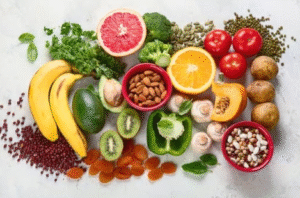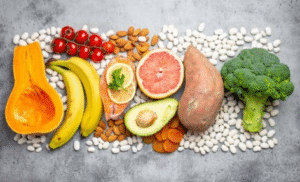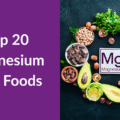
20 Foods High in Potassium and Magnesium
About the Magnesium–Potassium Duo
Magnesium and potassium are vital electrolyte minerals, essential for:
- Regulating nerve signals and muscle contractions
- Maintaining heart rhythm and bone health
- Balancing fluids and blood pressure
While adults need about 3,100–4,200 mg/day of potassium and 310–420 mg/day of magnesium, surveys show many fall short, especially in the U.S.—almost half don’t meet magnesium needs.
Why Humans Need Them Together?

- These minerals work in sync, regulating fluid balance and cellular functions like muscle and nerve activity.
- Proper potassium intake helps prevent high blood pressure, kidney stones, and supports bone health.
- Magnesium supports over 300 enzyme reactions, including hormone regulation and energy production.
- Their combined intake can improve cardiovascular, metabolic, and neurological health, beyond the benefit of each alone.
How This Combo Supports Fertility Health
- Magnesium plays a key role in hormone balance—it’s a cofactor for enzymes like aromatase, vital for estrogen production and ovulation in women.
- In men, magnesium and calcium levels in semen correlate with sperm count, motility, and morphology—key fertility factors.
- Overall, balanced intake may enhance IVF success rates, reduce inflammation, and improve embryo implantation.
Top 20 Foods High in Potassium and Magnesium
Here’s a curated list highlighting “foods rich in potassium and magnesium” and “food that has magnesium and potassium”:
| Food | Potassium (mg) | Magnesium (mg) | Highlight |
| Spinach (1 cup cooked) | 271 mg | 78 mg | Rich leafy green |
| Swiss chard (1 cup cooked) | – | 150 mg | High in magnesium |
| Avocado (1 avocado) | 690 mg | 58 mg | Potassium & healthy fats |
| Banana (1 medium) | 422 mg | 40 mg | Classic nutrient-rich snack |
| Sweet potato (1 cup cooked) | 540 mg | ~30 mg | Tuber powerhouse |
| Lentils (1 cup cooked) | 731 mg | 60 mg | Protein + minerals |
| Black beans (1 cup cooked) | 305 mg | 120 mg | Fiber- and nutrient-rich |
| Edamame (¹/₂ cup cooked) | 49–94 mg | ~50 mg | Great plant-based combo |
| Pumpkin seeds (1 oz) | ~223 mg | 150 mg | Nutrient-dense snack |
| Almonds (1 oz) | 198 mg | 80 mg | Healthy fats & minerals |
| Cashews (1 oz) | 160 mg | 72 mg | Magnesium-rich nut |
| Salmon (6 oz filet) | 624 mg | 30 mg | Protein + omega‑3s |
| Yogurt (1 cup) | 380 mg | 29–42 mg | Calcium, probiotics & minerals |
| Dark chocolate (1 oz, 70%) | – | ~50 mg | Antioxidants + magnesium |
| Quinoa (1 cup cooked) | – | 60 mg | Whole grain powerhouse |
| Tofu (½ cup) | – | 73 mg | Plant protein + minerals |
| Broccoli (1 cup cooked) | – | 24 mg | Mixed nutrients |
| Coconut water (1 cup) | 600 mg | ~25 mg | Great for rehydration |
| Beet greens (1 cup cooked) | 259 mg | 98 mg | High in both minerals |
| White beans (½ cup cooked) | 421 mg | – | Potassium-rich |
This “magnesium rich foods chart” helps visualize top choices and shows foods that contain potassium and magnesium in meaningful amounts.
Smart Ways to Include Them Daily

- Breakfast: Green smoothie with spinach, banana, Greek yogurt, chia seeds.
- Snack: Trail mix with almonds, pumpkin seeds, dark chocolate bits.
- Lunch/Dinner: Salmon + quinoa + steamed Swiss chard or green beans.
- Hydration: Coconut water or plain water with a pinch of salt.
- Bean-based dishes: Lentil or black bean soups/salads.
Final Takeaway
Pairing foods rich in potassium and magnesium supports heart, bone, nerve, muscle—and fertility health. A balanced diet with whole foods like leafy greens, legumes, nuts, seeds, fish, and whole grains lets you tap into nature’s best sources. Before supplements, aim for nutrient diversity—your body will thank you!





